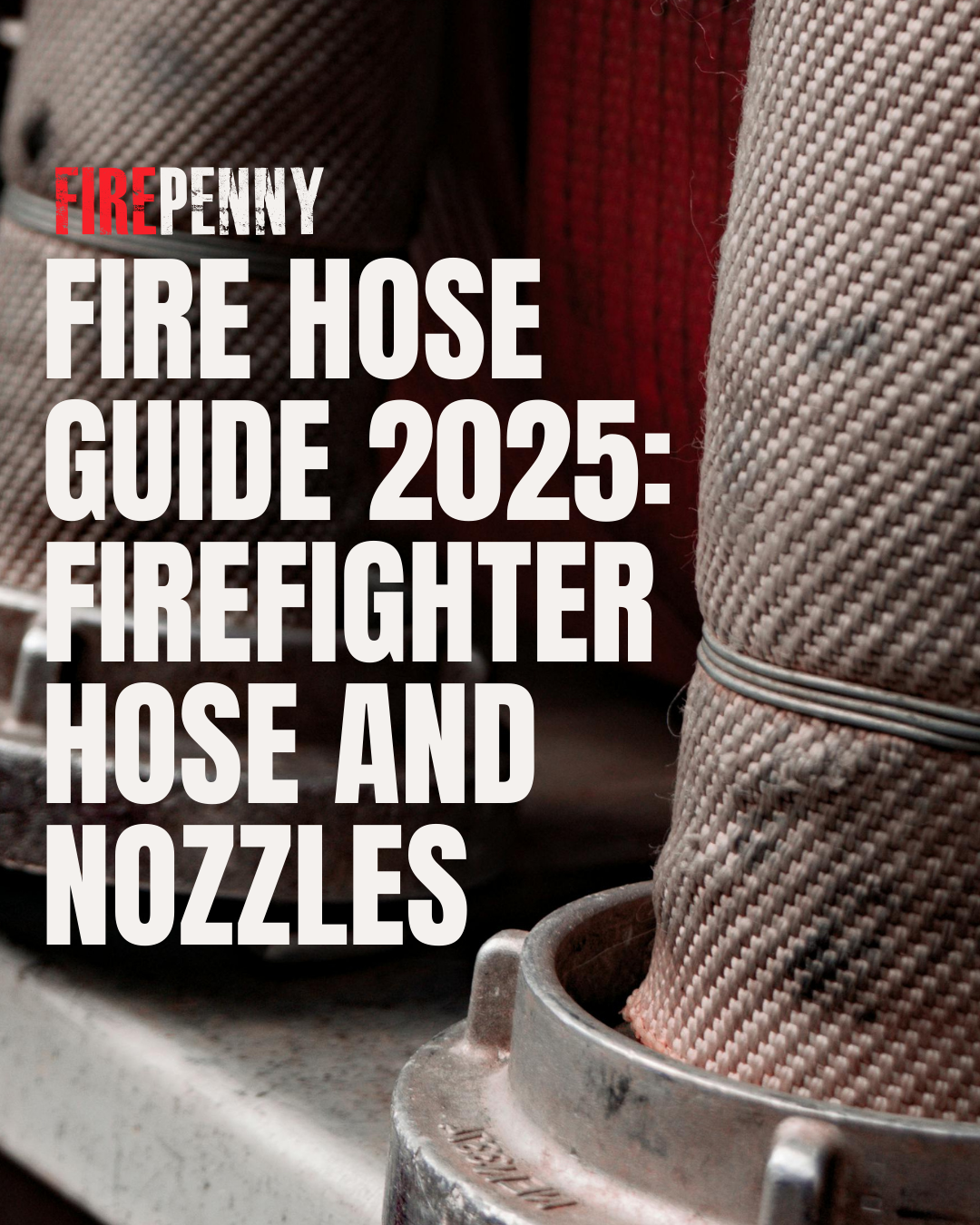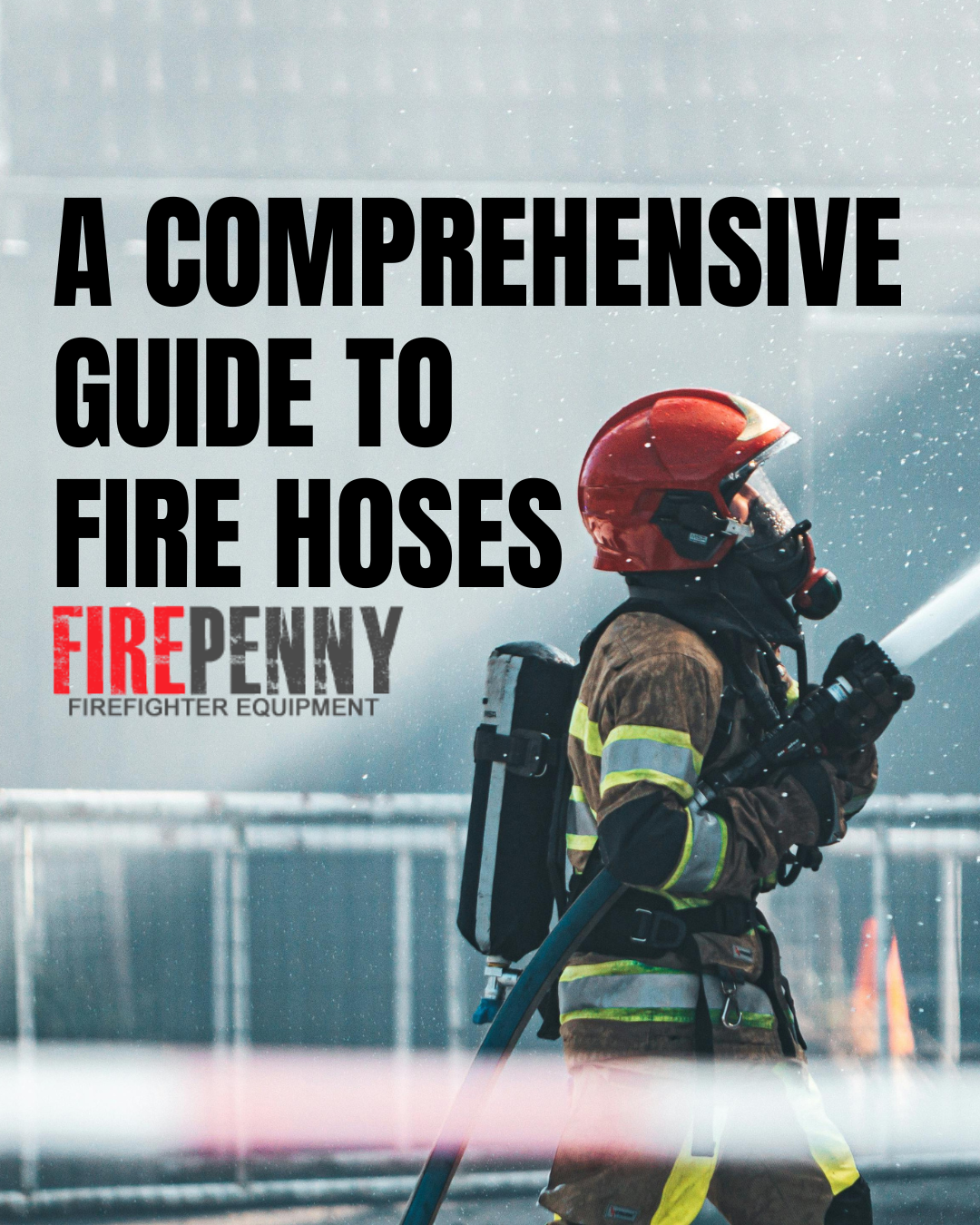Exploring the Varieties of Fire Hoses: A Comprehensive Guide
Posted by Firepenny on Jun 14th 2024
Posted by Firepenny on Jun 14th 2024
Fire hoses are the backbone of firefighting operations—whether in urban structure fires, wildland firefighting, or rural emergency response. As the lifeline that delivers water where it’s needed most, hoses come in different types, sizes, and designs, each serving a specialized purpose. For firefighters, fire chiefs, and procurement officers, understanding the differences between attack hoses, supply hoses, booster lines, and forestry hoses is essential to ensuring safety, efficiency, and NFPA-compliant operations.
In this guide, we’ll break down the main types of fire hoses, their applications, and how to choose the right option for your department or crew.

Attack hoses are the frontline workhorses of firefighting. Designed for high-pressure water delivery, they are lightweight yet durable, typically constructed from rubber or thermoplastic materials. Their maneuverability allows crews to advance quickly into structures or toward flames.
Common Sizes: 1½-inch and 1¾-inch diameter.
Lengths: Typically 50 to 100 feet.
Applications: Direct fire attack, interior structural firefighting, and rapid knockdown.
Also called large-diameter hoses (LDH), supply hoses are responsible for moving massive volumes of water from hydrants or static sources to fire engines or portable pumps.
Common Sizes: 2½ inches to 5 inches in diameter.
Key Benefit: Reduced friction loss, allowing efficient water flow over long distances.
Applications: Establishing a water supply when hydrants are sparse or far from the incident.
Compact and versatile, booster lines are smaller in diameter (typically ¾-inch to 1 inch) and often stored on reels for rapid deployment.
Construction: Lightweight polyester or rubber-jacketed material.
Applications: Vehicle fires, mop-up operations, dumpster fires, or quick initial attack.
Advantages: Flexible, easy to maneuver, and ideal for confined spaces.
When fighting wildfires or brush fires, firefighters rely on forestry hoses—built for extreme terrain and harsh outdoor conditions.
Size Range: 1 inch to 1½ inches.
Features: Abrasion resistance, mildew resistance, and high flexibility.
Applications: Wildland firefighting, grass fires, and remote incidents with limited access to hydrants.
Though not hoses, firefighter nozzles are integral to the operation of any attack line. They regulate water flow, stream shape, and reach.
Smooth Bore Nozzles: Provide a solid, penetrating stream—effective for deep-seated fires.
Fog Nozzles: Produce a fine mist for cooling and smoke control.
Combination Nozzles: Offer both solid and fog stream modes for versatile use.
Selecting the correct fire hose depends on the operational environment, department needs, and compliance with NFPA fire hose standards. For example:
Municipal departments may prioritize durable attack and supply hoses.
Wildland crews rely on forestry hoses that can withstand rough terrain.
Industrial facilities might need booster lines for rapid response to small-scale fires.
Fire chiefs and purchasing officers should evaluate hose diameter, construction, and coupling types (NH, NST, NPT) when making buying decisions.
Fire hoses are more than just tools—they are the literal lifeline between firefighters and the flames. From high-pressure attack hoses to rugged forestry lines, understanding the strengths of each hose type ensures your department is prepared for any emergency.
At Firepenny.com, we carry a full range of fire hoses, nozzles, wildland firefighting gear, PPE, and fire department equipment at some of the lowest prices in the business. Whether you’re outfitting an entire department or replacing critical equipment, our team is here to help.
Shop Fire Hoses at Firepenny.com
Explore Wildland Firefighting Gear
Contact Us for Department Quotes
